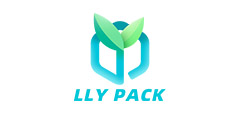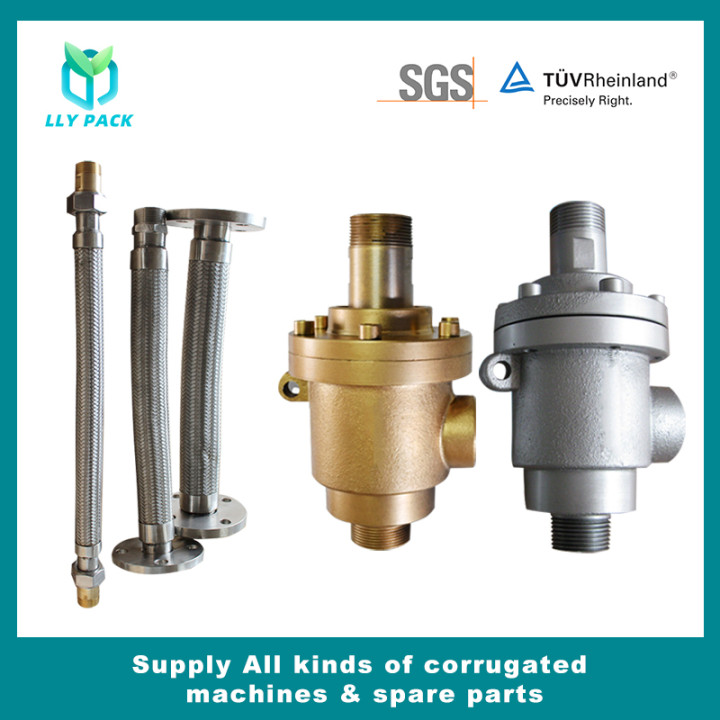Adhesive formulation and adhesion control is one of the important steps in the production of corrugated board, and it is crucial for how to obtain the best bond strength, production efficiency and economic benefits. The author's statistics on paperboard scrap at his employer's office show that about 80% of scrap products are directly or indirectly related to adhesive failure. This article attempts to start from the bonding theory, to explore the impact of the bonding parameters, in order to achieve the best adhesion.
Starch binders come in a variety of formulations, but they all have four basic components: starch, water, sodium bicarbonate (NAOH), borax, and most are formulated using the double-tank method. The functions of each component are as follows:
Starch husk starch A dilute starch dispersion that acts as a carrier, suspends and transports particles, controls the penetration of moisture and binders on the paper sheet, and contributes to the formation of wet bond strength. The amount of about 17% of the total starch.
Raw starch is an insoluble particle with a diameter of 10-25 μm. When heated to a certain gel temperature, it absorbs moisture and expands to gelation.
Water forms a flowing liquid and acts as a dispersant for the starch solution, providing moisture to the gel.
Borax 1. Interaction with the carrier starch helps maintain the moisture in the agent and aids in homogeneous gelation of the powdered granules. Increase the adhesion, improve the viscosity stability of the adhesive; 3. When adding NaOH buffering, to avoid damage to starch; 4. With the starch gel to form a network of complexed polymers, high viscosity is generated, which contributes to the formation of binding force. Dosage about 1.2-1.8% of the amount of starch can not be added too much, otherwise it will increase the cohesive strength, so that the adhesive becomes the same with the rubber.
Carbohydrate (NaOH)
1. Is a strong base, combined with the starch hydroxyl in the solution to destroy the hydrogen chain, reduce the gelatinization temperature of the starch, so that it is maintained at between 63-66 °C; Helps the adhesive wet the wet paper surface, allowing the adhesive and paper to come into contact with the paper and penetrate into the paper sheet. If the gelling temperature is too high, it will inevitably consume more calories to gelify it; if it is too low, it will partially gel before use, affecting the work and bonding quality of the sizing system.
Hydrogen Peroxide Urea Hydrogen peroxide acts as a bleaching agent, oxidation modifier, and increases fluidity. Urea plastically enhances the adhesive and achieves a certain waterproof effect.
The thermosetting resin is cured at a high temperature into granular structure material in the adhesive, so that the physical strength of the cardboard is greatly improved, and the low-strength and high-strength of the corrugated cardboard is provided.
Before discussing bond failure, it must be pointed out that the bonding process of the adhesive in different sections is not the same. Therefore, the control of bonding is different in different sections.
In a single-sided machine, the adhesive on the top of the corrugated sheet is combined with the face paper under high pressure and permeate at the same time, and its thickness does not generally exceed 1/4 of the thickness of the paper. After the cardboard comes out of the two corrugated roll nips, the starch may not be completely gelled, and the gelation process is completed by the waste heat of the cardboard conveying bridge. On a double-sided machine, on the one hand, the preheater cannot preheat the panel excessively, otherwise the starch will gel prematurely;
On the other hand, the adhesive is cured by heating. The temperature of the hot plate (drying section) is usually around 180°. The temperature is controlled by the movement of the canvas pressed against the free rotating cloth roller (for floating The hot plate technology veneer device controls the temperature through the number of high speed hot plates. In the single-sided machine, corrugating is formed by high-pressure heating; on the gluing machine, no high pressure can be applied to protect the corrugation from damage. (To be continued)
EnglishEspañolPortuguêsDeutschहिंदी日本語ខ្មែរNederlandsالعربية한국어मराठीMalagasyItalianoPolskiSvenskaελληνικάPусскийภาษาไทยTürkShqipMagyarViệtSamoaМонголMaltiIndonesia FrançaisMelayuҚазақшаYorùbáবাঙালিעִברִיתGàidhligSomaliEesti keelKreyòl Ayisyennorskčeštinaفارسیతెలుగుမြန်မာBosanskiMaoriქართულიRomânăбеларускіУкраїнськаతమిళGaeilgeSuomalainenپښتوລາວհայերենSlovenščinaFilipinoO'zbekÍslenskaייִדישLatviešuGalegoFryskनेपालीKurdîCatalàбългарскиHawaiianHrvatskiਪੰਜਾਬੀWong JawaKiswahililëtzebuergeschisiXhosaEuskalSundaZuluગુજરાતીТоҷикӣ
- Zuhause
- Über uns
-
Produkt-Liste
- Wellblech
- Wellmaschine >
-
Wellmaschinen Ersatzteile >
- Drehgelenk
- Kamm für Slitters Torschütze
- Bremsbelagsatz
- Membranpumpe für Kleber
- Papierstreifen aus Papier
- Expansionsfutter.
- Flexibler Metallschlauch.
- Schleifrad
- Klebeband für Splicer
- Wellwalze
- Schneidklinge
- Überkopfbrückentraktionsgürtel
- Sonnenrad
- Förderband
- NC Schneidklinge
- Kondensatableiter
- Pneumatische Zylinder
- Pneumatische Bremse
- Luftbrübchenfeder
- Vakuumpumpe Wasserring
- Wellmaschinenschmiermittel
- Kautschukhalter
- Titan-plattierter Abstandhalter
- Flexo -Drucker -Slotter
- Flexo -Druckermaschine >
-
Drucker Ersatzteile >
- Kupferplatte
- Druckplatten-Rack
- Aropumpe
- Stahl- und Messingbürste
- Tintenfilter
- Arztblätter
- Ambossabdeckung
- Schaufelblatt
- Faserband
- Hängender Rahmen
- Pet Pre-Strip mit Film
- R- und BAK -Druckkissen
- Fütterungsrad
- Ein Weg mit Lager
- Rotations-Matrize
- Einzelne Membranpumpe.
- Tintenkanalende Block
- Gummiemembran
- Entenbillventil
- Magnetische Kupplungsbremse
- Hanging Groove Strip
- Verpackungsmaschine >
- Kartonmaschine >
- Kartonmaschinenteile >
- Doppelte Fader-Gurte.
- Nähen des Klebensystems >
- Karton Schnittklinge >
- Wolframstahlklinge >
- Schleifrad
- Abfallstripper
- Verpackungsmaschinenklinge >
- Ausrüstung vorab >
-
Industrial Cutting Blade >
- Fliese Schneidkreissägeklinge
- Metallschneideblatt
- Holzschnittsägenklinge
- Nahrungsschneideblatt
- Faserschneidklinge
- Chipper Blade
- Biegeform
- Blatt für Gemüseschneidemaschine
- Stahldünne Klinge
- Tsukatani -Sterbe Klinge
- Drucker Die Schnittklinge
- Maskenmaschinenklinge
- Slitter Rewinder Blade
- TMR Blade
- Tabakkreisklinge
- Scherblade rollen
- Gezacktes Messer für die Verpackungsmaschine
- Papierschneidebandklinge
- Doktorklinge
- Runde Klinge
- Drei Löcher Blade
- Keramikklinge
- Bandmesserklinge für Stoff
- Bandmesserklinge für Schwammschaum
- Bandmesserklinge für die Spaltmaschine
- Bandmesserklinge für Papier
- Messerhalter
- Industrial Cutting Blade
- Fräser
- Winkelmühle
- Shredder Blade
- V Grooving Blade
- Elektrische Schere
- CNC Machine Blade & Tools
- Lebensmittelverarbeitungsklinge
- Nachricht
- Video
- Kontakten
- Anfrage versenden










